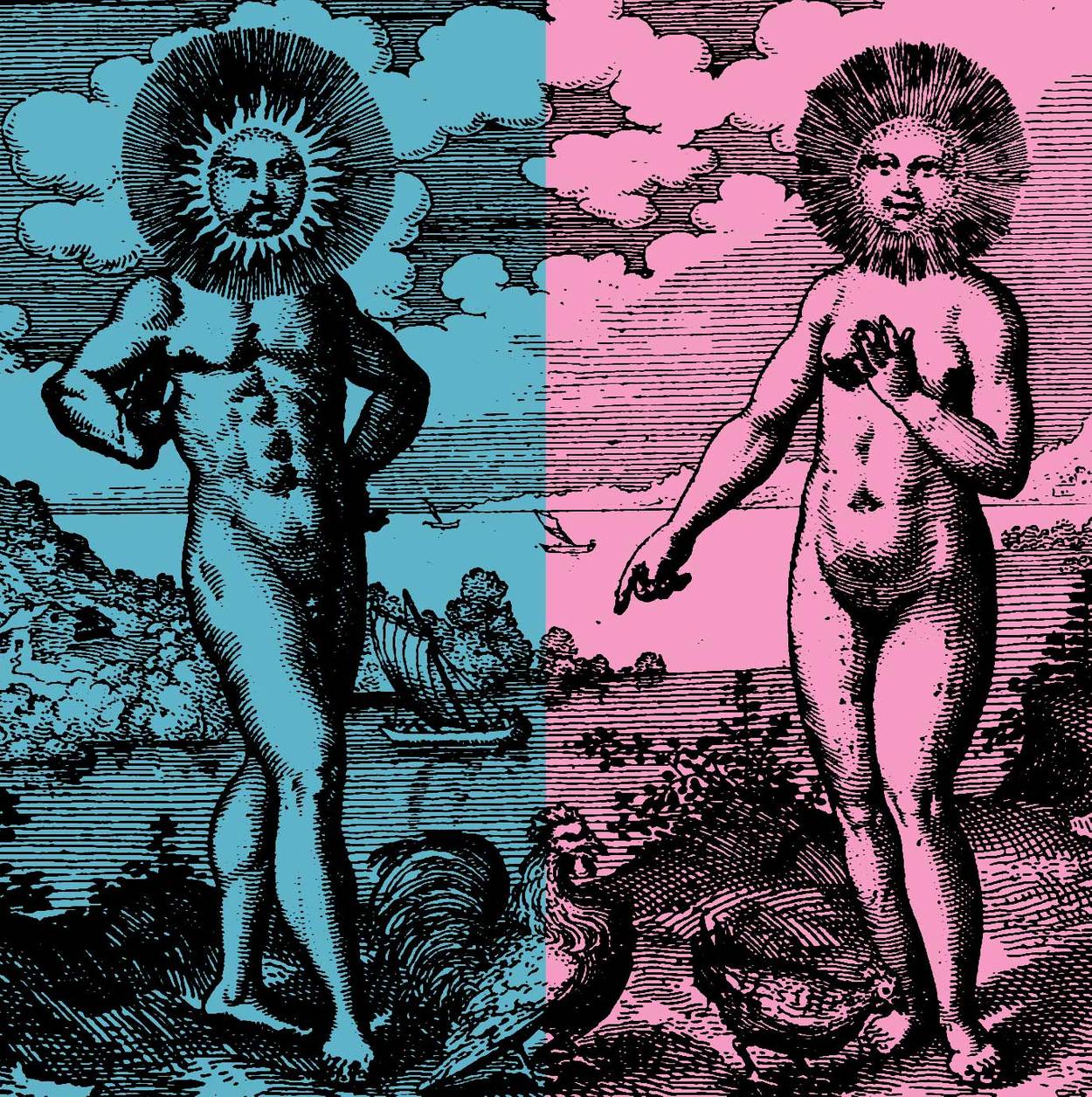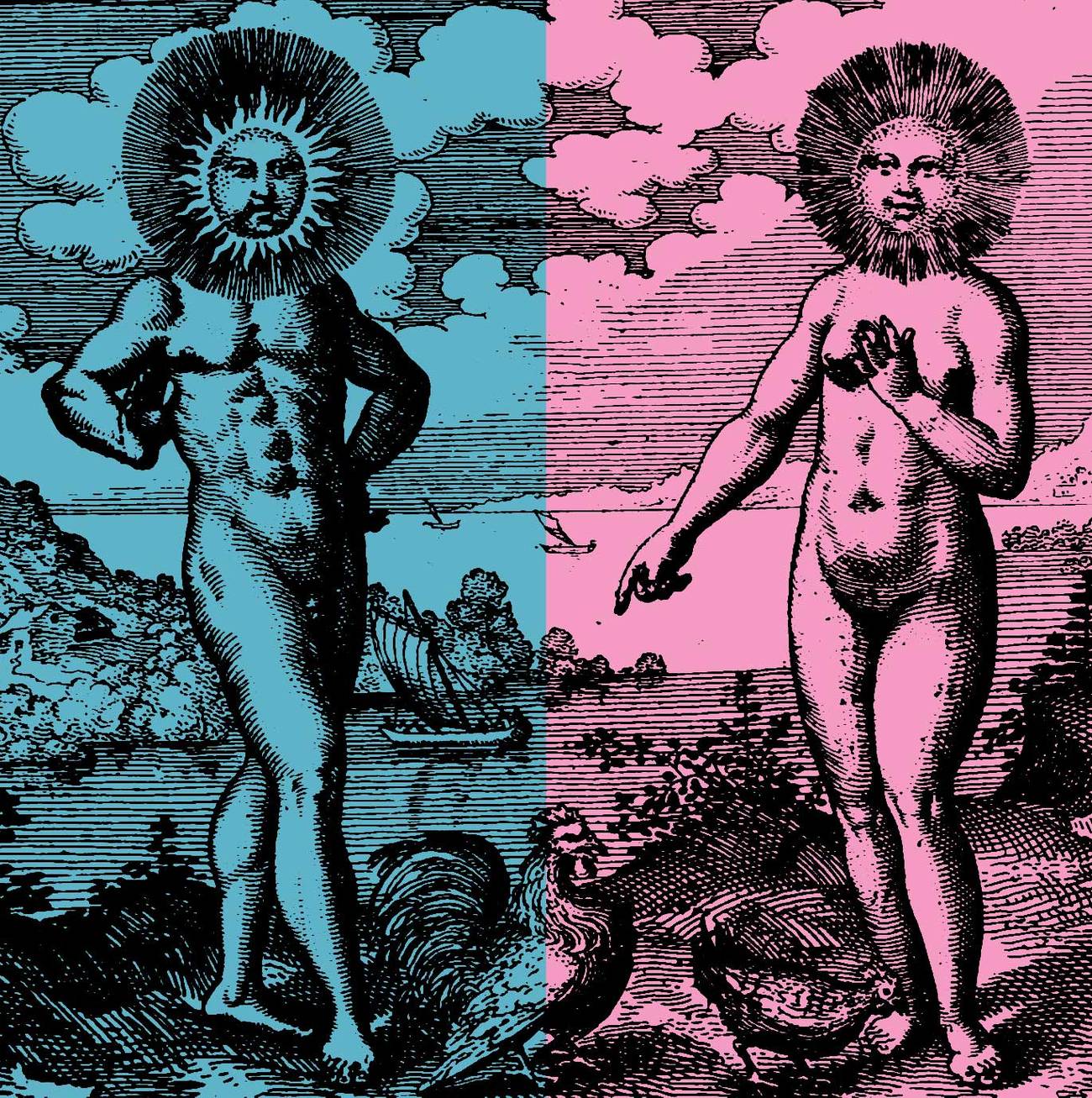Does God Use They/Them Pronouns?
Debates around gender identity go back to Talmudic times




To many of its critics, the debate over gender pronouns is a recent development, a silly parlor game dreamed up by progressive professors and enacted by the zealous members of Generations X and Z. But the idea that gender norms may be more fluid than many of us think was one explored by Judaism’s sages from Talmudic times onward, introducing nuances and complexities that still guide and inspire those of us thinking seriously about these issues today.
To be sure, Halacha, or Jewish law, frequently codifies gender as binary, but the Tannaim of the first and second centuries discussing the occurrences of intersex people were far less conclusive. In Tractate Yevamot, for example, R. Eliezer rules that an intersex individual is undeniably male, but R. Yose disagrees, arguing that intersex individuals are one of a kind and cannot be definitively categorized as either male or female. Later in the 12th century, the Rambam returned to the same assumption as R. Yose, arguing that as the intersex person’s gender remains undetermined, they should follow the stricter Halachic obligations for each gender.
But while most Halachic discussions of nonbinary gender representations remained focused on the body, the appearance of Kabbalistic works in the medieval period transformed the conversation, taking these considerations of sexuality to a whole new realm, encompassing considerations of androgyny in both body and soul.
The Israeli scholar and philosopher Moshe Idel, for example, argued that medieval mysticism understood androgyny in two ways: queer bodies, androgynos, or intersex; and queer souls, du-partzufin, a term that loosely corresponds to our current category of nonbinary. These, Idel reminds us, aren’t random social constructions: God’s very form and the structure of the heavens is constructed of equal male and female attributes, or sefirot, but there is no binary gender or sex distinction for the universal being that they comprise.
The very idea of God, in other words, suggests a reality beyond simple gender and sexual dichotomies. If everything we see here on Earth is the indistinct shadow of the upper world, Idel writes, could we somehow “allow for androgyneity a certain positive significance, in connection with the structure of the divine realm?”
The 13th-century Spanish Kabbalist Joseph Gikatilla delved deeper into this idea in his work, the Sha’arei Orah. Every human being, he wrote, possesses two faces, one active and influential, the other passive and recipient, one masculine and the other feminine. This is a remnant of the first being and original androgyne Adam whose initial composition was similar to that of the androgynous Godhead. As it is written in Genesis 1:27: “And God created man in His own image.” Humanity’s initial androgynous condition is heavily discussed in a number of Jewish law texts as well as mystical ones.
In Talmud Bavli, Rabbi Yirmeya Ben Elazar recounts that Adam was first created with two faces (deyo), one male and the other female. As it is stated: “You have formed me behind and before, and laid Your hand upon me” (Psalms 139:5). Male and female once shared a bodily structure as du-partzufim within Adam, stemming from one in the same essence, or animating life force. The initial creation of Adam and Eve as one implies a fundamental femininity in all things masculine and inherent masculinity in all things feminine. It is only cultural and social pressures that drive us to ignore this reality, and favor one face at the expense of the other.
These Kabbalistic dynamics of androgynous gender and sexuality are found in a great deal of Yiddish literature from the 1960s where they interact with Halachic Jewish life. Judaism by nature is a very porous culture. During the dawn of gay rights Jewish art and writing was used to comment on the social, religious, and cultural life of androgynous and queer individuals in Jewish communities.
Isaac Bashevis Singer’s “Androgynous” tells the tale of Reb Motele, who hears of an androgyne named Shevach who is rejected by her first husband when he discovers that she does not have female genitalia. Reb Motele ultimately decides to marry Shevach himself, taking on a great personal weight within his community as Shevach’s ambiguous gender is seen as a threat to the clear binaries and stringent laws of Halacha, not only for herself but for Reb Motele as well. Regardless he decides to surpass all contingencies of the law for hesed, an act of humanity.
Some of Singer’s stories are even staples of Jewish Ashkenazi American popular culture such as the literary classic, later adapted into a film, Yentl. Yentl is a character with the power of du-partzufin: In her gender performance she is nonbinary and is described as “unlike any of the girls in Yanev—tall, thin, bony, with small breasts, and narrow hips. ”She fails at most of the obligations given to Jewish women and breaks one of the upmost stringent Halachic laws of Judaism in dressing like a man.
However, those closest to Yentl and herself would not consider this to be that dishonest of her true nature. Reb Todros, Yentl’s father, tells his daughter, “Yentl—you have the soul of a man,” to which she responds by asking, “So why was I born a woman?” Reb Todros responds, “Even Heaven makes mistakes.” Still, Yentl maintains a heterosexual identity throughout the course of the story in her attraction to her yeshiva fellow and best friend Avigdor, a heterosexual male. Singer, importantly, makes a distinction that the Kabbalists themselves intimately understood, between sex, sexuality, and gender. He shows the power of gender performance, and explores just how much humanity relies on the visual to give us information about sexuality, gender, and attraction, but how little any of these have to do with who we are or whom we love. Singer’s stories have now become contributing literature in the established discussion of androgyny in Jewish life.
The Kabbalah of the medieval period hashed out a potential platform for earthly androgyny that Halachic decisors had long debated throughout the generations. Even though there is no official place for a third or fourth gender within Halacha or Kabbalah, this doesn’t mean that queerness and androgyny, while still taboo, are not acknowledged as naturally occurring states within our world. Ultimately, we are bound by different rules than those that stir the Godhead. However, in Jewish history, we see humanity reject these rules letting their masculine and feminine faces shine at varying lengths, thus bending the dynamics of binary gender to create their own honest performance, and demanding a place of consideration and representation within Jewish history, law, and culture.
Leigh Pennington currently attends The Hebrew University of Jerusalem pursuing a master’s degree in Jewish Studies at the Rothberg International School.